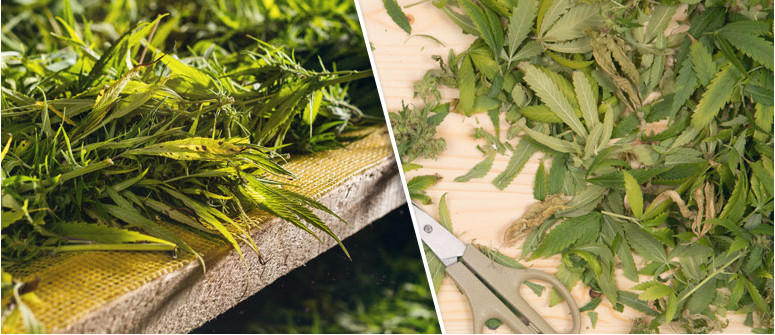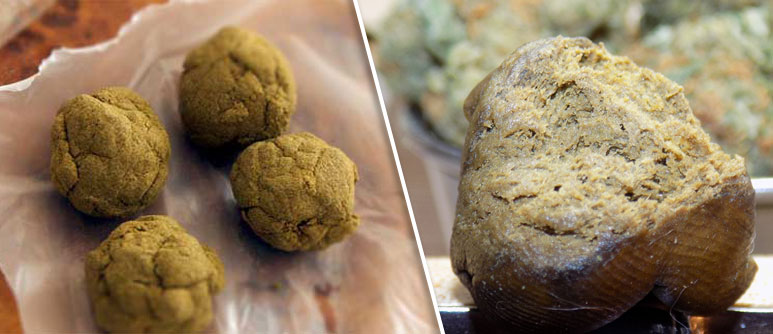What to do with cannabis trim after a harvest

Just harvested your cannabis plants? Don't throw your trim away! Here are just a few options of how to put it to good use.
After harvesting your cannabis crop and performing a manicure on your beautiful bounty of buds, you can find yourself left with enough trim to fill up a couple of large bags.
So what to do with it? Throw it in the bin? Certainly not! Place it in the compost pile? A slightly more useful approach, but still not optimal. There is a far better use for these leftover leaves. Read on if you want to know what you can do with it.
Although trim may seem useless, and you probably won’t want to stuff them into a bowl or joint and fire them up instead of your dank harvest, they do still contain an amount of cannabinoids and are key ingredients to several cannabis-containing recipes. Here are just a few options on how to invest your trim after completing a harvest.
Most of the following applications for your trim will require you to decarboxylate your material. This is the process of heating your trim to the point where acids inside the plant are converted into active cannabinoids such as CBD and THC.
MAKING CANNABUTTER
Many of you enjoy venturing beyond the everyday smoke and vape every now and often enter the realm of cannabis edibles. Cannabutter is a fundamental ingredient to so many of those edible recipes: from brownies, cakes or biscuits, to sauces, spreads and dressings. If you happen to enjoy edibles, putting your trim to use in this domain is a fantastic option.
Cannabutter requires about 100g of butter, 100ml of water and 100g of ground up trim. Mix these ingredients and simmer for about half an hour. Strain and store in your fridge, where the mixture will become solid and separate from the water. Remove the excess water and what will be left is a solid block of yellow-green butter, ready to be used in a whole array of edibles.
MAKING AN EXTRACT
If you have a significant amount of trimmings, you could choose to create an extract such as BHO (butane hash oil) using a solvent extraction tube. The end result here won’t be incredibly potent but will provide a stash for when you fancy something a bit lighter or if you have no alternative.
Other equipment needed to make BHO, includes butane, 2 pyrex dishes, a heating pad, a scraper and a container. Making BHO can be risky though, since you will be dealing with highly flammable solvent. It's therefore important to fully educated yourself beforehand to avoid any serious accidents.
TURNING IT INTO HASH

Making hash is another great option for using up your trim. This process will separate the trichomes from the rest of the trim and form a strong concentrate, providing you have a massive amount of trim at hand. The trichomes are small glands found on the buds and leaves of cannabis plants and produce cannabinoids such as THC.
Hash is a concentrate, so if you use enough trim it will most likely produce stronger effects than the average joint rolled with buds alone. However, the high is often quite clear and mentally stimulating.
CANNABIS MILK
As well as making cannabutter for the many available edible recipes, trim can be used to make a range of drinks if made into cannabis milk. For this particular recipe, you'll need about 100ml of milk or cream and 100g of dried and ground up trim.
Combine and heat your mixture, letting it simmer for 30 minutes. Be careful not to let it reach boiling point. Strain, let cool and store in the fridge. Cannabis milk is great for making cannabis infused milkshakes, smoothies and coffees.
COOKING OIL
An alternative to cannabutter, cannabis cooking oil can be used in a similar way. Heat up 100ml of olive oil with 100g of dried and ground up trim. Cook on a low heat to avoid damaging the trim and leave it to infuse for up to 3 hours. Then cool and strain.




